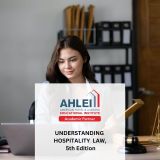Objectives:
At the completion of this course, students should be able to:
1. Describe the EEOC and distinguish between EEO laws andaffirmative action.
2. Define “disability,” and describe the Americans with Disabilities Act (ADA) and its
implications for human resource managers at hospitality operations.
3. Explain the importance of job analysis and job design.
4. Apply methods for forecasting labor demand, identify the advantages and disadvantages of
internal and external recruiting, and explain the functions of a computer-based Human
Resource Information System (HRIS).
5. Describe the importance of the selection process, explain how managers use application
blanks and pre-employment tests as selection tools, and identify the types of selection errors
and biases managers must overcome when screening job applicants.
6. Explain the purpose of an orientation program, distinguish between a general property
orientation and a specific job orientation, and identify specific socialization strategies and
approaches.
7. Identify and explain the stages of the training cycle, and describe various training methods.
8. Describe the functions of performance appraisals, describe commonly used methods of
appraising employee performance, and identify legal issues relating to performance
appraisals.
9. Describe types of compensation, and outline the major influences on compensation plans.
10. Explain the steps and identify options for establishing pay structures, and describe current
issues in compensation administration.
11. Describe effective incentive programs and identify four general categories of employee
benefits.
12. Summarize the reasons employees join unions, analyze the statistics and trends of union
membership, and explain the goals and content of major U.S. legislation affecting labor
relations.
13. Identify mandatory, voluntary, and illegal collective bargaining issues and common
economic and non-economic reasons behind bargaining.
14. Identify major sources of grievances, describe typical grievance procedures, and outline how
to prevent grievances at union properties.
15. Summarize the history, scope, and goal of the Occupational Safety and Health Act, and
describe the enforcement of OSHA standards and requirements.
16. Describe the components and benefits of an employee assistance program (EAP).
17. Identify sources and consequences of work place stress, and outline the implications of such
issues as AIDS, depression, workplace smoking, and wellness programs.
18. Outline the hospitality industry’s turn over problem, identify the causes and costs of turnover,
and summarize several methods for reducing turnover.
19. Summarize approaches to employee discipline and explain the proper use of discipline in a
hospitality organization.
20. Describe the appropriate use of discharge in an employee discipline program and outline an
effective exit interview system.
21. Summarize ethical issues in business, including how businesses can assess ethical behavior,
recent ethical issues in American business, and ethical issues in human resources management.








